To Bill LeBlond, senior editor, Chronicle Books, who encouraged me to write my second Big Book, The Big Book of Soups & Stews, following The Big Book of Casseroles; to Rebecca Pepper for her thorough and precise copy editing and helpful suggestions; and to Amy Treadwell, editorial assistant, for all of her help.
And special thanks to Jim Herbold, computer consultant; Margi Herbold and Donna Addison for their testing and contributions; and to friends, family, and neighbors who willingly sampled many of the recipes.
Soups and stews are a universal food, found in almost every part of the world. All countries have their own traditional ingredients, but all soups and stews have one thing in commonthey make you feel good! No wonder they are often called comfort food, or food for the soul.
Todays approach to making soups and stews calls for fresh ingredients and high-quality meat. They are no longer considered a budget meal or a way to use leftovers. Soups and stews are great for family meals but can also be served for casual, informal gatherings, such as tailgate parties, luncheons, buffets, and suppers.
In The Big Book of Soups and Stews, you will find a variety of practical, savory soups and stews for all occasions. Many of the traditional and classic soups and stews have been revised, updated, and streamlined for todays home cook. Also included, along with the old favorites, are some well-known ethnic-inspired and international soups and stews, plus other original and exciting new combinations and fresh ideas. All recipes have been home tested.
Soups and stews are similar in that both are a combination of complementary ingredients cooked in one pot in a flavorful broth or sauce. However, they also have some differences.
Soups are appealing and usually agree with almost everyone. What is more welcome than a steaming bowl of soup on a cold, stormy night, or a refreshing cold soup on a hot summer day? Soups are for all seasons.
Homemade soups are easy to make and are generally more nutritious and more flavorful than the canned or packaged variety. Soups can be thick, thin, smooth, hot, cold, light, or heavy. Creamy soups are often served as a first course to stimulate the appetite. Hearty, chunky soups are served as the main course for lunch or a light supper. Fruit soups can be served any time of the day: breakfast, brunch, lunch, supper, dinner, or a late-night snack.
.
Stews are prepared by a method called stewing. The ingredients are cooked in a small amount of liquid in a covered pot for several hours. The long cooking period tenderizes the meat and allows the flavors to blend with other ingredients. Stews are chunkier and thicker than soups and have more substance. They can be served in bowls or alongside pasta, grains, potatoes, or polenta. Stews can be cooked on top of the stove in a heavy pot or in an ovenproof pot or casserole in a medium oven.
Stews are usually served as the main coursethe proverbial one-dish mealfor lunch or dinner. They are especially popular in the fall and winter when there is a chill in the air.
All that is needed to complete the meal is a green salad and crusty bread.
A NOTE FROM THE AUTHOR
Some stoves are hotter than others. If medium-low is too hot for gentle simmering, reduce the temperature to low, or alternate between medium-low and low.
If you like more seasonings, add more, especially salt and pepper. Always taste the soup or stew before serving. If you are a garlic or onion lover, you can always add more than the recipe calls for.
If there is an ingredient that you dont like, leave it out or use a substitute. Vegetarians can use vegetable broth instead of chicken or beef broth.
If the soup or stew is too thick, add more liquid (this is especially true when reheating). If the soup is too thin, add more ingredients or a thickening agent.
If necessary, most soups and stews can simmer longer than is called for in the recipe on very low heat until ready to serve.
Be flexible, use common sense, and have fun!
ADVANTAGES OF SOUPS AND STEWS
 Add variety to the menu.
Add variety to the menu.
 Easy to make.
Easy to make.
 Great for make-ahead meals. Most soups and stews improve when reheated; the exception is seafood.
Great for make-ahead meals. Most soups and stews improve when reheated; the exception is seafood.
 No-fuss mealall in one pot.
No-fuss mealall in one pot.
 Easy serving and easy cleanup (one bowl).
Easy serving and easy cleanup (one bowl).
 Satisfying and wholesomesoothes the appetite.
Satisfying and wholesomesoothes the appetite.
 Minimum special equipment needed.
Minimum special equipment needed.
 Economical (depending on ingredients).
Economical (depending on ingredients).
 Little attention required while cooking.
Little attention required while cooking.
 Flexibleingredients can vary with availability and cooks preference.
Flexibleingredients can vary with availability and cooks preference.
 A fun way to entertain for a casual, informal party or a nutritious family meal.
A fun way to entertain for a casual, informal party or a nutritious family meal.
 Can play a role in weight watching.
Can play a role in weight watching.
 Slow cooking builds flavor.
Slow cooking builds flavor.
 Canned products such as tomatoes, broth, and beans can be used for convenience.
Canned products such as tomatoes, broth, and beans can be used for convenience.
 Frozen vegetables can be used.
Frozen vegetables can be used.
COOKING TERMS
BEAT: To mix vigorously with a spoon or mixer.
BCHAMEL: A white sauce made by stirring milk into a butter-flour roux.
BISQUE: A rich, thick soup usually consisting of seafood (sometimes poultry and vegetables) and cream.
BLANCH: To partially cook very briefly in boiling water.
BOUILLON: A broth made by cooking vegetables, meats, poultry, or fish in water. Available canned (concentrated) and in cubes (dehydrated).
BOUQUET GARNI: A bundle of herbs and spices in a metal tea ball, spice ball, or tied in a cheesecloth sack to flavor soups and sauces. Remove before serving.
CAYENNE: A hot, pungent powder made from tropical chiles, also called red pepper.
CELERIAC: The root of a special type of celery, also called celery root.
CHIFFONADE: To cut leafy herbs and vegetables into thin strips.
CHOP: To cut into small, irregular pieces.
CHOWDER: A thick, chunky seafood or vegetable soup, as in clam chowder; usually includes potatoes.
CLARIFY: To clear a cloudy liquid by .
CONSOMM: Clarified stock, often sold in condensed form.
CRME FRACHE: A thickened cream with a nutty flavor and .

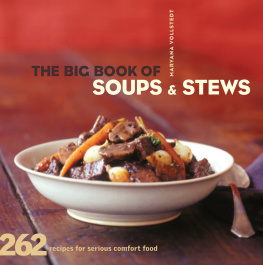


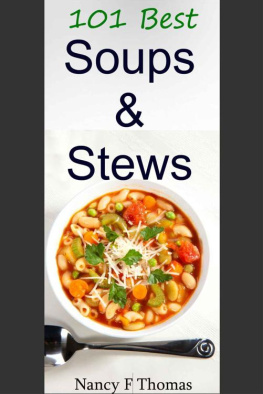
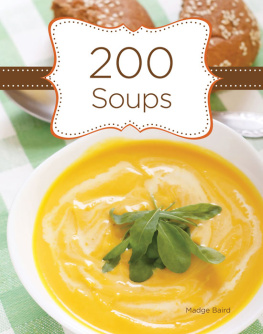
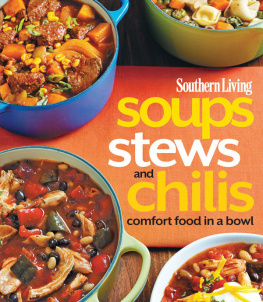
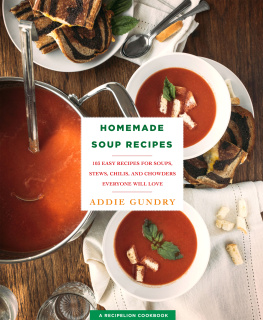

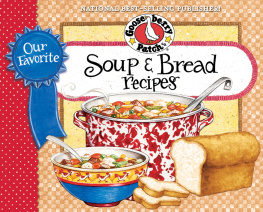

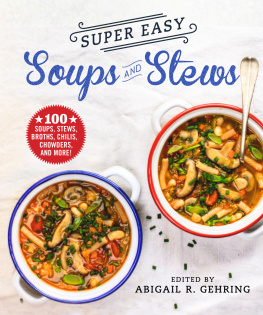

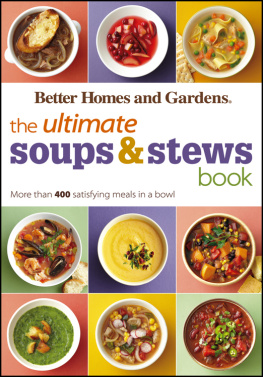

 Add variety to the menu.
Add variety to the menu.